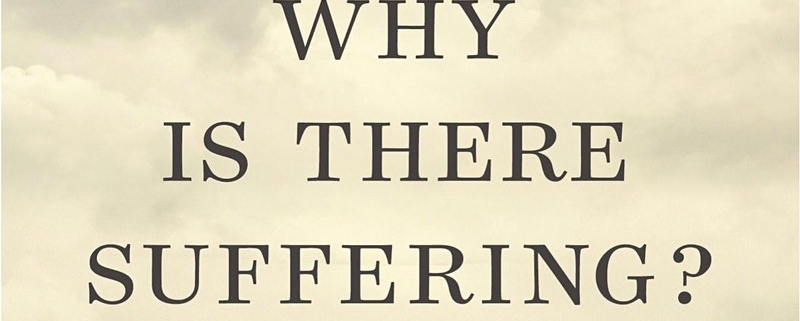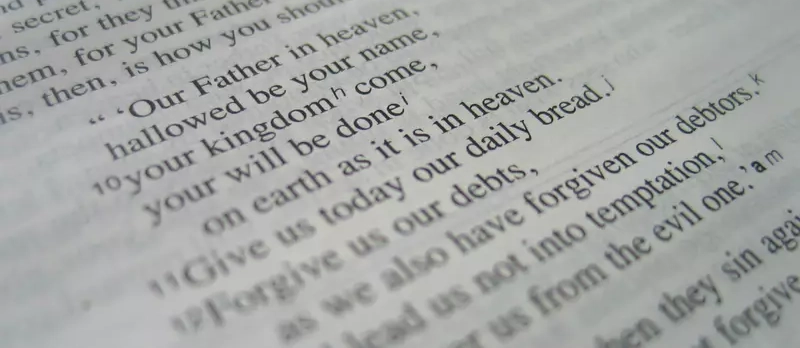Book Review: “Why Is There Suffering?” by Bethany Sollereder
During my time at Northern Seminary, two of the most impactful theological insights for me had to do with learning to recognize my theological assumptions and examining the consequences of my beliefs.
In her new book, Why Is There Suffering: Pick Your Own Theological Expedition, Bethany Sollereder provides a brilliant path for exploring how our theological assumptions about suffering lead to consequences for human identity and the character of God.

Bethany Sollereder
Sollereder is a postdoctoral research fellow at Oxford University. She is a regular contributor for BioLogos, has been published in Modern Theology, and is also the author of God, Evolution, and Animal Suffering: Theodicy without a Fall.
Why Is There Suffering opens up with a decision. Before perusing the table of contents, reading the foreword, or checking out the introduction, the reader is invited to examine why they even picked up the book or how they like to approach books in general.
For those who want to start at the beginning, they are given the page number to the foreword. For others who want to hear the book’s rationale, they are pointed to the introduction. For the adventurous type who just wants to get started, they head straight for page 1. For those who want to see flow charts and maps for where the adventure is going, they get sent to the appendix. And for the traditionalists among us, they can go check out the table of contents, which is whimsically placed at the end of the book.
If this sounds at all confusing to you, it’s actually quite a fun experience. I’ve never even considered what assumptions I have when approaching the process of book reading. And I’ve read a ton of books. So prior to getting into the topic of suffering at hand, I’ve already been given an exercise in deepening my own self-awareness.
At the end of each section, Sollereder gives a range of options for you to decide where to turn to from there. Each option you choose leads to an exploration of the complexities and possibilities that develop as a result of your theological choice.
As the paths fork and bend, you have to decide such theological assumptions as what God is like, whether there even is a God, the extent of God’s power or plan, where God is positioned in suffering, the role of death, the purpose of judgment, the scope of new creation, and even whether your pet goes to heaven.
 As you follow each path to its conclusion, you are then confronted with the statement: “You have come to the end of this path.”
As you follow each path to its conclusion, you are then confronted with the statement: “You have come to the end of this path.”
That simple sentence was one of the most profound realities to sit with. If you know my theological journey, I’ve traveled a number of the paths that Sollereder explores in this book. I have friends who have traveled others. So I tried to embody the assumptions of each path. But when I had to sit with the end of each path, the emotions that each path had silently seeded within me began to peak through the soil.
How did I feel about each conclusion? Was I left hopeless, settled but wishing there could be more, excited but wondering if it was too good to be true? Each conclusion brought about a mixture of emotions for me to sit with that were well worth processing through.
But the paths and conclusions also went beyond helping me process my own theological views of suffering. They also helped me to explore the wonders and wounds of my neighbors in a way that fostered empathy rather than judgmental analysis. I sensed no straw men throughout the book. Even for the paths I disagreed with, I could be present with them at each fork in the road, understanding how they were making their decisions, and feeling what emotions they might be feeling or conflicts they might be wrestling with.
Another important feature of this book is its readability. Sollereder says, “This book is designed to help you explore theological options. Academics have hammered out many ideas about suffering in the dark corners of musty libraries over the years, and this book brings them out into the light of day.”
“I invite you into the theological choices in this book with a sense of play.”
—Bethany Sollereder
But perhaps my favorite part of Why Is There Suffering is how it fosters a childlike approach to theological reflection. Sollereder says, “I invite you into the theological choices in this book with a sense of play. I have no answers or agenda to change your mind. I simply hope to provide a different set of ideas than you may have already encountered. Making meaning of your experience in light of these positions is still work you will have to do. I cannot do it for you, nor will I tell you what to think … You may find that a path you were sure was the best now seems weaker than you initially thought. That’s okay. Try a new path and see what happens. You can always go back to the former path if you need to. In fact, if you come to a point where you can’t decide which path to take because too many seem right, leave a bookmark and come back to it later.”
Too often, theological dialogue feels more like an interrogation meant to bring about a predetermined outcome. But by providing a range of Christian and non-Christian theological journeys that have been formulated in the academy, utilizing a “pick your own path” format that many of us enjoyed as children, writing in a language that is very accessible, and walking with us like a loving parent would in a healthy parent-child relationship, Sollereder engages our minds, awakens our hearts, and opens our hands to walk our paths of suffering with wisdom beyond our years and childlike wonder.










Leave a Reply
Want to join the discussion?Feel free to contribute!